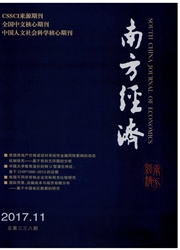

 中文摘要:
中文摘要:
本文基于随机前沿方法( SFA)对1999-2011年中国37个工业行业的技术创新效率进行测量,并首次尝试从行业要素禀赋的分析视角,利用面板数据的系统广义矩估计( SYS-GMM),实证检验了中国政府在技术创新投入和产出方面的行为在整体上和分行业两个方面对技术创新效率的影响。结果表明,中国工业行业技术创新效率整体较低,政府对企业技术创新效率的科技激励作用存在明显的行业差异。从整体看,政府的直接资金支持并不利于整体行业的技术创新效率;从分行业看,政府科技投入只对高技术制造行业有效,对其他行业却带来了技术创新效率的“损失”。政府对知识产权的保护,不论是对整体行业还是分行业,均表现为正向影响,但是影响作用有限。
 英文摘要:
英文摘要:
Based on Chinese 37 industries data from year 1999 to 2011 , this paper firstly uses the Stochastic Frontier Approach ( SFA ) to measure the technological innovation efficiency. From the factor endowments, we take SYS-GMM to study the relationship between government behavior and technological innovation efficiency. The results show that the average technological innovation efficiency is low. Meantime, the government funds on R &D behavior have negative effect on the efficiency of technological innovation for the whole industry, and are only helpful to the high technology manufacturing. The intellectual property right protection of government output behavior has positive effect on both the whole industry and the different five divisions, but the effect is very limit.
 同期刊论文项目
同期刊论文项目
 同项目期刊论文
同项目期刊论文
 期刊信息
期刊信息
